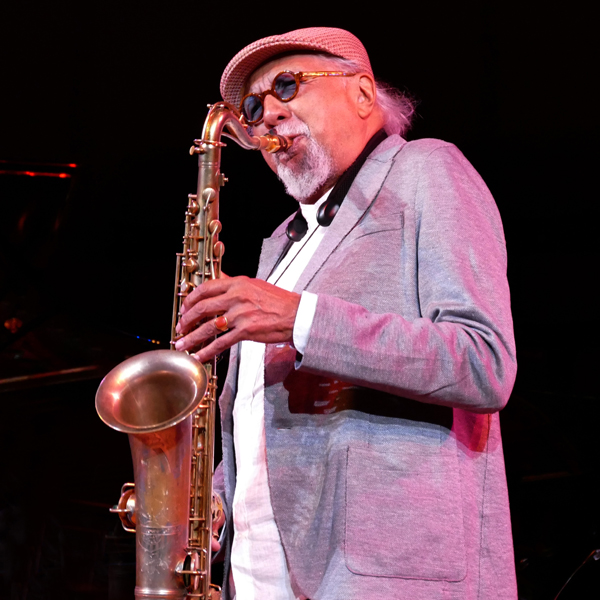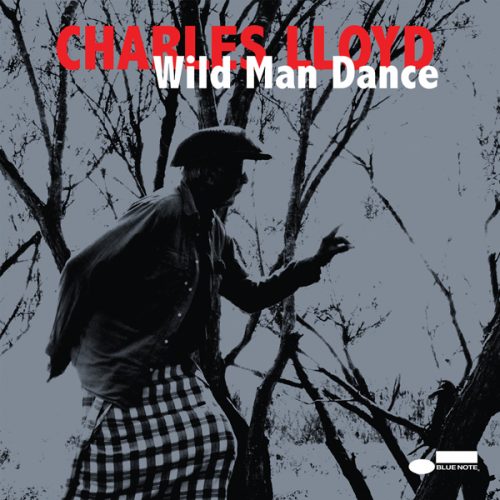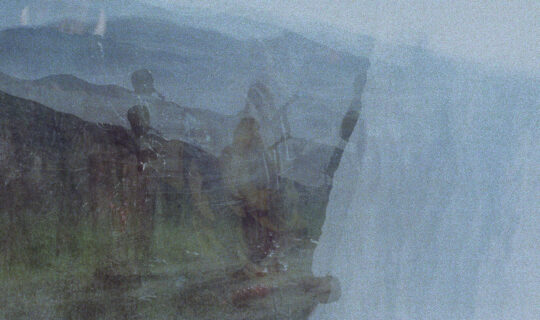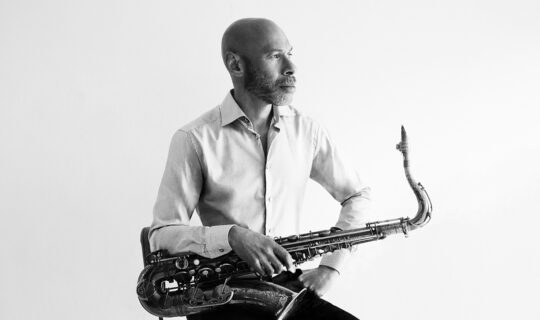April 10, 2015
Over 50 years into an already legendary career, 2015 is shaping up to be a momentous year for Charles Lloyd. The esteemed saxophonist and composer will be awarded the NEA Jazz Masters honor celebrating his remarkable career as well as recognizing his creative brilliance in the pantheon of such other living and vital jazz legends as Sonny Rollins and Wayne Shorter. Another career landmark will arrive in April when Lloyd returns to Blue Note Records 30 years after making his label debut for the release of his magnificent new album, Wild Man Dance, a live recording of a remarkable long-form suite commissioned by the Jazztopad Festival in Wroclaw, Poland, to commemorate the festival’s tenth anniversary in 2013.
For the past half-century Lloyd has loomed large over the music world with both his presence and his occasional absence. A musical mystic, Lloyd has apprenticed with jazz and blues legends from Phineas Newborn to Cannonball Adderley to Howlin’ Wolf, helped launch the careers of jazz luminaries like Keith Jarrett and Jack DeJohnette, co-headlined rock events with Jimi Hendrix and Janis Joplin, collaborated with fellow artistic explorers from Ken Kesey to Lawrence Ferlinghetti, pioneered the world music movement by teaming up with the Hungarian guitarist Gabor Szabo and Indian tabla master Zakir Hussain, and became one of the first million-selling jazz artists with the global success of his 1966 album Forest Flower.
The six-movement Wild Man Dance Suite was recorded in its premiere performance at the festival and features pianist Gerald Clayton, bassist Joe Sanders, and drummer Gerald Cleaver, as well as Greek lyra virtuoso Sokratis Sinopoulos and Hungarian cimbalom maestro Miklós Lukács, who color and texture and rhythmically charge the music. Lloyd’s compositions are at turns elegant, graceful, turbulent, dynamic, meditative, pacific and emotive. The music evokes a sense of transcendence and mysterious journey from the opening “Flying Over the Odra Valley” that spotlights Lukács’s cosmic hammered delivery as well as the leader’s tenor saxophone brio, to the lyricism and dynamics of the epic “Wild Man Dance” finale where all the band members gracefully and gleefully converse.
“I come from a tradition of wild yogis,” says the 76-year-old Lloyd, who sagely explains the undergirding of Wild Man Dance. “I’m a blues man on a spiritual journey. The blues come out of a quest for freedom. My spiritual path is the search for the liberation of the soul.”
After Lloyd performed at the 2010 edition of Jazztopad with his “landmark group nonpareil” New Quartet—pianist Jason Moran, bassist Reuben Rogers and drummer Eric Harland—the artistic director Piotr Turkiewicz told him their set was the best concert in the festival’s history and asked him to write something special for the tenth anniversary. “No special theme was discussed,” Lloyd says. “I was interested in the geographical locale of Wroclaw. What was the natural environment of the region? What birds fly through there? Do rivers run through it? The piece is about finding freedom, so I wanted to know these things. As I began writing, it was for a core quartet instrumentation of piano, bass and drums, but the added voices of lyra and cimbalom quickly flowed in.”
Wild Man Dance marks Lloyd’s first Blue Note release since 1985’s A Night in Copenhagen, a live quartet set from the 1983 Copenhagen Jazz Festival, featuring aspiring pianist Michel Petrucciani who had urged Lloyd to come out of retirement from his Big Sur home. Lloyd and Petrucciani also participated in the fabled One Night With Blue Note concert that re-launched the label that year at New York’s Town Hall. “I came down from my spiritual retreat in 1981 to help Michel get a foothold on the world stage, as the elders had done for me,” Lloyd says. “When things started to take off for him I returned to my solitude in Big Sur.”
“It wasn’t until a near death experience in 1986 that I fully rededicated myself to this beautiful tradition from which I come,” Lloyd explains. In 1989, Lloyd began his inspired 16-album relationship with ECM Records. “When Don Was became head of Blue Note [in 2011], he came up to see us and invited me to record for the label.” Lloyd ultimately accepted the invitation, with a mission in mind: “I want to stretch my wings wider and find new thermals to soar on. It is all a continuation of my search and service in sound.”
Certainly, Wild Man Dance fits the mission with a select support crew along for the ride. For this new project, Lloyd put together a formation that had not worked together previously. Eight months prior to inviting pianist Gerald Clayton to be part of the Wild Man Dance project, Lloyd invited Clayton to perform at a date in Minneapolis where the saxophonist heard him expressing “a vibrant connection to the music” followed by another impressive showing in Memphis. That sealed the deal for Lloyd—a mentor to an impressive history of pianists, including Herbie Hancock, Keith Jarrett, Michel Petrucciani, Bobo Stenson, Brad Mehldau, Geri Allen and Jason Moran.
Lloyd says, “Maybe it is significant that the initial seed with Gerald was watered near the mouth of the Mississippi and took root in the Bluff City where I grew up and where Phineas Newborn planted the piano seed in my heart and ears, and which now resides in the hem of my garment.” He adds that he’s very pleased with Clayton’s quartet contributions: “He brings a classical sensibility rooted in the bosom of jazz and a strong love of the deep blues. He is a poetic and lyrical soul, and quiet as it’s kept, he has some hip dance moves. So, this too, is continuing and unfolding in a beautiful way.”
As for the inclusion of the lyra and cimbalom, Lloyd explains that the instrumentation derived from the initial suggestion that he compose a piece that would include a string quartet. “So, strings were on my mind,” he says. “However, I envisioned different kinds of strings interacting tonally and texturally—piano strings, bass strings, bowed strings of the lyra and the mallet hammered strings of the cimbalom.” He had worked previously with Sinopoulos, but became acquainted with Lukács after performing a concert in Budapest in 2012 with two Hungarian tarogato players who suggested including the country’s foremost cimbalom virtuoso. “I had fallen in love with the cimbalom many years earlier when I first heard it played by gypsies in our hotel restaurant in Debrecen,” he says. “Miklós comes from a Roma family and is an amazingly intuitive musician. With him in mind, I added voicings for the percussive, harpsichord-like cimbalom to the suite.” As a result, Lloyd says that in subsequent performances of the suite in Athens and London, “the music swirled like a dervish.”
Lloyd marvels at the organic nature of each band member’s performance of Wild Man Dance. “The music goes direct,” he says. “As to how this happens, words elude me. The ‘zone’ is what calls me—and it is not about my solo or their solos, but about the synchronicity of our combined expression and elevation. Volition, vision and velocity. The call of the wild.”
The jazz master still has many miles to traverse in his “call of the wild.” In the midst of celebrating his astounding new recording, Wild Man Dance, Lloyd continues to look to the horizon. “I am still searching to find the sound,” he says. “It is my path. I call myself a ‘sound seeker’…the deeper I dive into the ocean of sound, I find there is still deeper and further to go.”







